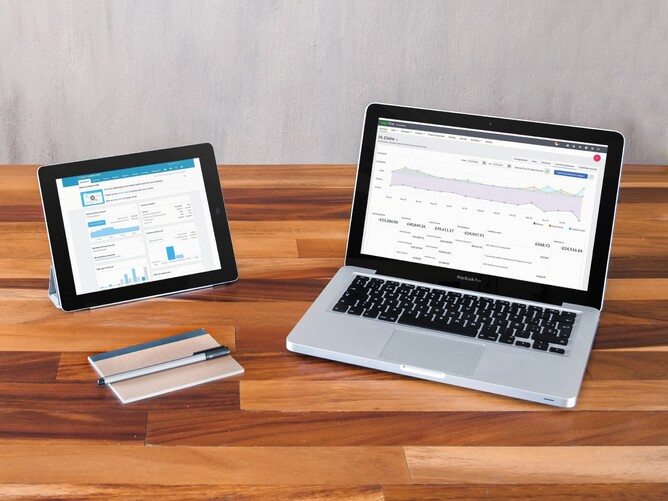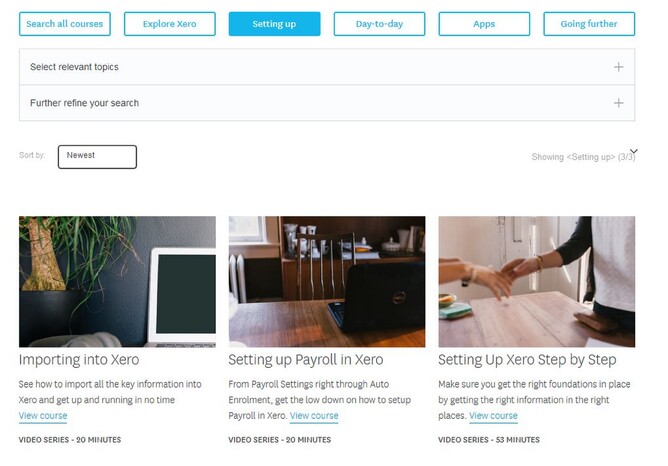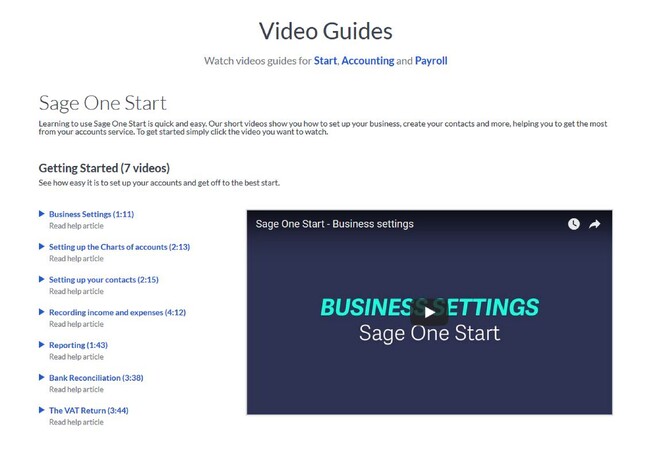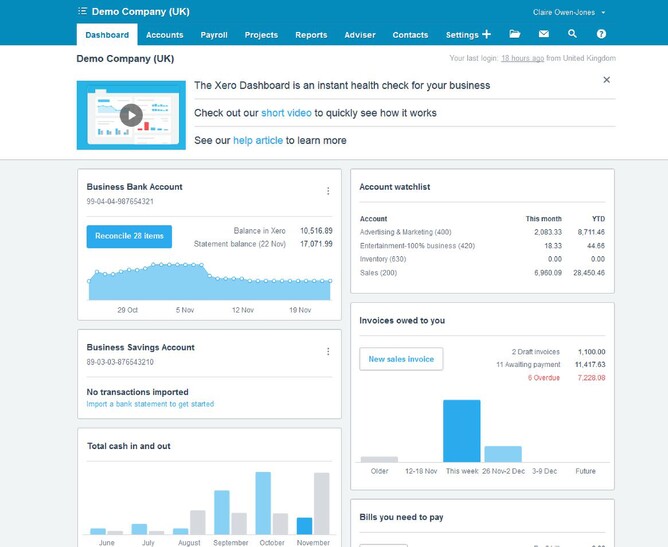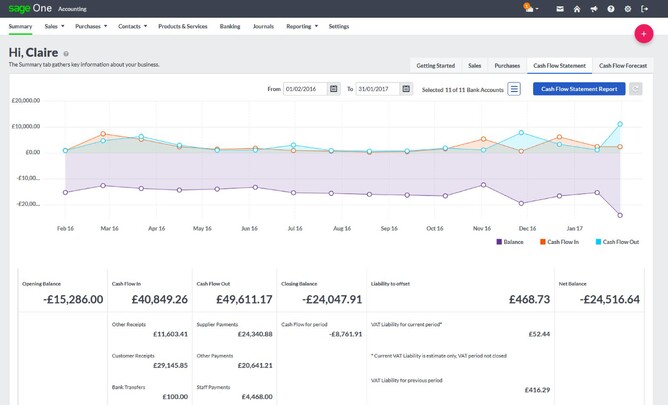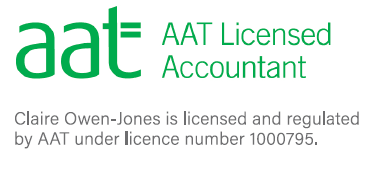I’m not naive enough to think that Xero is the right accounting software for everyone.
Unfortunately, there is no one size fits all accountancy package. There never will be.
However, as someone who works exclusively with Xero, it’s important to me that you only use it if it works for you. Otherwise, it’s going to be like trying to get a round peg into a square hole every time you attempt some bookkeeping.
And that’s not the point of investing in accounting software. You don’t want to pay a small monthly fee to hate your bookkeeping just that little bit more every time you log in.
So, in this blog series, I am going to compare Xero against each of its competitors, so you can make an informed decision as to what software you feel is right for you.
But won’t this blog series be a little biased towards Xero?
I hope not.
To give the other software a fair platform, I have brought in the help of another bookkeeper who uses the software daily.
This isn’t intended on being a Xero love fest. I want this blog series to be honest.
So, who is the SAGE One expert?
The SAGE One knowledge has been supplied by Claire Cooksey who runs CS Bookkeeping Services.
Claire is an associate member of the IAB and is a big fan of SAGE. Having originally been trained on SAGE 50, she has embraced their cloud based package and currently has all her clients on SAGE One.
So, with the introduction over with, let’s get started…
How easy is the software to set up?
When you initially set up Xero and SAGE One, you are walked through each stage of the process. This means that if you complete each section, the software will be correctly set up.
If you are a new business, then you should be able to get yourself up and running on both software systems in a very short space of time.
If you are starting the systems mid-year or have opening balances from a previous accounting period, you may wish to ask your accountant for some assistance getting these inputted correctly. However, if you have a trial balance, then both Xero and SAGE One are clear on how to do this.
So, both Xero and SAGE One seem equal in this area.
Is additional support or training required to use the software?
There are two reasons why you may need additional training and support.
The first is with help figuring out what the software can do.
A quick glance at the Xero website and the help section that you can access via your software will show that Xero has clearly invested a lot of time and energy on its education department. There are videos, guides and help sheets for pretty much every query you may have.
SAGE One’s videos and guides are sparser, but they are continually improving. There is now a handy library of videos for you to access that cover the basics. Within the software its-self there are lots of question mark icons to click on which will take you directly to the help sheet for that heading or section.
The second reason you may want additional support or training is for accountancy knowledge.
Neither software pretends that it acts as an accountant replacement or gives you direct bookkeeping training.
This means that you can allocate your expenses incorrectly and still make a right hash of the figures. For example, the help videos will tell you how to reconcile the bank but not what code you should allocate each line to.
So, I think Xero takes this one due to the extensiveness of it’s training resources but I’m confident that SAGE One has enough to get you going.
If I fall behind with my bookkeeping, is it easy to catch up?
Both Xero and SAGE One enable you to import bank statements and invoices from a CSV file, should you need to bring in larger quantities of data.
Their bank reconciliation functions also have a matching function that can save a lot of time.
However, the bank reconciliation is one area that Xero has invested a lot of time and energy and the little time saving tricks available here really sets the software apart.
I won’t bore you with details, but the cash coding option enables you to take your bank transactions and sort them like you would in an excel spreadsheet. The other option which several of my clients’ love is bank rules where you can tell Xero what codes certain transactions need to go to.
Due to the little extra tips and tricks that Xero can offer, I would say that if you are having to do a large lump of bookkeeping in one go, it should be quicker and easier to do on Xero.
Is it easy to correct mistakes?
Generally, one of the joys of cloud based software is its flexibility. And as a result, it can be easier to correct any mistakes that you may have made.
Both Xero and SAGE One allow you to click into a transaction and recode the account number, change VAT rates, dates and so on. This means that if you decide that you want parking fees to move from motor to travel mid-way through the year, or you realise you have miss-posted an asset to repairs, it is very straight forward to do so.
With VAT Returns, providing you remember to close the previous VAT period, both Xero and SAGE One will automatically pull through any adjustments into your next VAT Return.
So, on the face of it, both Xero and SAGE One are equally as easy to correct mistakes in.
However, Xero has a nifty trick up its sleeve in the form of a Find and Recode button. This enables you to mass recode items and can be found in the advisor tab on the software. Not everyone will have advisor access to Xero, so I can’t officially include it within this review.
Is it easy to navigate around and find specific transactions?
Both Xero and SAGE One are easy to find your way around.
Xero has a very good, one-page dashboard. From here you can click through to other sections of the site; enabling you to quickly add a sales invoice or see in more detail who you owe money to. You can also edit the dashboard to include less items if you wish or move things around, so your main bank account is at the top and so on.
SAGE One’s dashboard is made up of several tabs. This means you have a Sales dashboard, a Purchases dashboard and so on. Each dashboard contains more information that the Xero one, so there is less clicking through but more immediate detail. You can change the date range to update the information show, but it doesn’t look as though you can remove or move items.
Both Xero and SAGE One have a clean and uncluttered menu, so you can find the sale page or the reports with ease.
A new(ish) feature within Xero is a search icon which is hidden in the top right away from the main menu. From here you can search by customer, supplier and even transaction value to find a particular item. This is a bit of a gem.
I would say that this search feature nudges Xero ahead on this one. The success of the dashboards is going to be personal preference. I think the SAGE One is too much information to be a true snap shot, but you may feel the Xero one doesn’t tell you enough.
What sort of reports can I generate?
Xero and SAGE One have a catalogue of available reports that should fit the need of every small business.
SAGE One strays into accounting jargon territory here with titles such as “Purchase Day Book” but it clearly knows this as it tells you what the report is for underneath the heading.
I like that Xero gives you the option to edit and custom some of its reports, which is handy if you have a larger business and want to focus some of the information.
Both myself and Claire agreed that the reports suit our small business clients, so if you want to play around and create custom reports then Xero is for you but SAGE One certainly isn’t lacking.
I’m looking to grow my business. Will the software grow with me?
SAGE One isn’t SAGE 50, so anyone hoping that SAGE One will have all the functionality and capability of its desktop counterpart will be disappointed. That said, it is a software that SAGE are investing in and it has come on leaps and bounds over the past year, and will probably continue to do so.
Improvements aside, SAGE One is an island of a software compared to Xero.
Xero thrives alongside an ecosystem of integrated apps. It is this ability to bolt on additional software which can increase its capability.
It’s for this reason that I’d say that you are unlikely to outgrow Xero in a hurry, but you may need to be open to the idea of spending a little more to do so. SAGE One is what it is, so it can certainly cope with a larger number of transactions but it’s lack in integrations could frustrate.
Is there anyone or any industry that is a particularly good or bad fit for the software?
Claire and I talked for quite a while about any bad fits for Xero and SAGE One.
Xero has recently launched a CIS module which should be released to the general public soon so if you are a contractor and have several subbies, then Xero could be the better option.
I think if you are an online seller, so work with Stripe and PayPal for example, then Xero is likely to be the better option again due to its integrations and bank rules.
However, if you are a small business. Maybe a freelancer or one-man band and your main concern is to be able to raise sales invoices, use bank feeds, produce VAT Returns and generally get a good feel of your finances, then SAGE One is an affordable and competent option.
Yes, it doesn’t have the bells and whistles of Xero but you might not need those bells as the Starter Option of £6 plus VAT a month could provide you with everything that you need. The starter package for Xero is £10 plus VAT but most business will fall under the transaction levels of the £22 plus VAT package (there are cheaper cash book versions of Xero available but these can only be purchased through a Xero certified advisor like myself).
For more information
Visit the Xero website
Visit the SAGE One website
If SAGE One is the best fit for you...
If you would like to talk to Claire Cooksey about SAGE One, her contact details can be found at CS Bookkeeping Services

